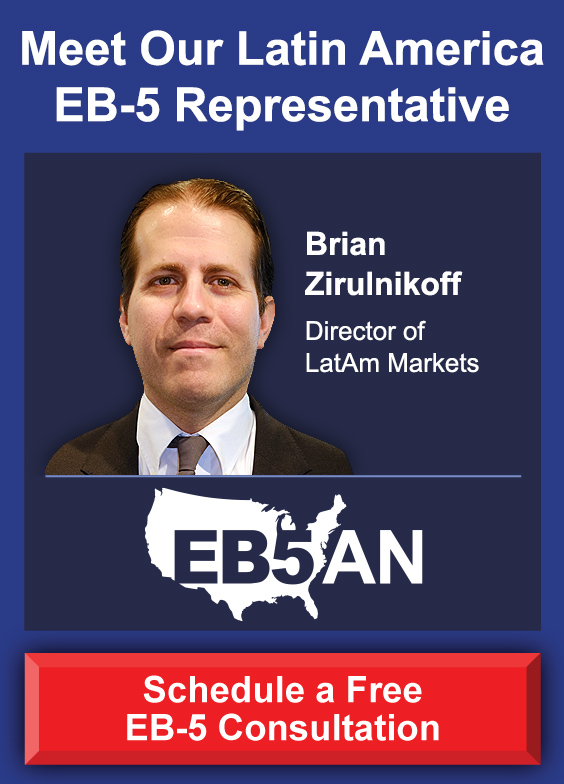The sweeping Build Back Better Act, passed by the U.S. House of Representatives on November 9, 2021, includes five provisions related to immigration, four of which have implications for the EB-5 industry. The Bill will now move to the Senate, and it is likely to undergo numerous changes before the Senate votes on it. However, the current form of the relevant provisions provides an overview of the direction the EB-5 program is likely to take in the future.
The key points for EB-5 stakeholders are that the legislative changes aim to
- introduce a supplemental fee of $15,000, payable in addition to the current filing fee, for I-526 petitions (section 60004) making the total cost $18,675 for a new EB-5 investor to file an I-526 petition
- end or reduce green card waste and recapture unused immigrant visas (section 60002)
- allow applicants to file adjustment of status applications early (60003) and avoid visa retrogression by paying a $50,000 one-time fee
- appropriate an additional $2.8 billion to United States Citizenship and Immigration Services (USCIS) to facilitate the processing of new applications and to aid with clearing the processing backlogs
The immigration provisions relate to multiple immigration programs, but for the purposes of this article, we focus on only the provisions and points that will affect the EB-5 program.
1. Introducing a Supplemental Fee of $15,000 for I-526 Petitions Making the New Total Cost $18,675
Section 60004 proposes supplement fees for several visa categories. The $15,000 supplemental fee for I-526 petitions is a fee over and above the filing fee and any other related fees. In other words, it does not replace other fees and the total cost to file a new I-526 petition would be $18,675.
2. Ending or Reducing Green Card Waste and Recapturing Unused Immigrant Visas
The cap for the number of family-based (FB) green cards issued annually is 226,000, while employment-based (EB) green cards are capped at 140,000. Any FB green cards remaining at the end of the fiscal year are added to the EB cap in the next fiscal year. However, if the additional green cards are not issued under the EB program, they fall away. Section 60002 of the Bill attempts to address this green card waste by adding the green cards that remain unassigned at the end of the second financial year to the FB green card cap for the following year. Thus, green cards continue to roll over instead of falling away.
Additionally, section 60002 attempts to recapture unused immigrant visas by adding unused green card slots from previous years to the caps for FB and EB green cards. For these categories, green card slots lost since 1992 due to backlogs and processing delays are included. According to the Cato Institute, this could amount to 270,661 unused EB green cards.
3. Allowing Applicants to File Adjustment of Status Applications Early
EB-5 investors can file for adjustment of status to secure conditional permanent resident status only if a visa number is available. Under section 60003 of the Bill, they will be able to file for adjustment of status even if a visa is not available. This will incur a supplemental fee of $1,500 for the principal applicant and $250 for each derivative applicant. Although filing for adjustment of status does not equate to securing permanent resident status with conditions removed, it does allow EB-5 investors and their families to continue living in the United States lawfully and without needing to maintain their nonimmigrant status. They will also be able to work for any employer and to travel abroad through advanced parole.
Section 60003 further provides the option for EB-5 investors to apply for a waiver from the EB-5 visa caps. In other words, they will be able to apply for permanent residence even if a visa number is not available, provided they have filed for adjustment of status and their priority date is at least two years prior to the date on which they lodge their application for a waiver. The proposed supplemental fee for the waiver application is $50,000. This fee would be an option for those EB-5 investors from countries facing visa retrogression; as of December 2021, this would only benefit those EB-5 investors who were born in Mainland-China and who invested in regional center EB-5 projects.
4. Providing an Additional $2.8 billion to USCIS to Facilitate Application Processing
In terms of section 60005, USCIS will receive an additional $2.8 billion in funding to ensure that the agency can process new applications, including those based on the changes to immigration law introduced by the Bill. Moreover, the funding is intended to “reduce case processing backlogs.”
Immediate Implications of the Build Back Better Act for the EB-5 Program
While most of the changes that affect the EB-5 program will bring relief for EB-5 investors who have been plagued by backlogs and processing delays, the proposed supplemental fees are substantial. Those considering the EB-5 green card route should invest now to make the most of the reduced investment amounts of $1 million ($500,000 in a targeted employment area) and to avoid the added cost of supplemental fees. Although the fees will be confirmed only when the Bill passes the Senate, the current form is an indicator of things to come—including added costs for new direct EB-5 investors.








